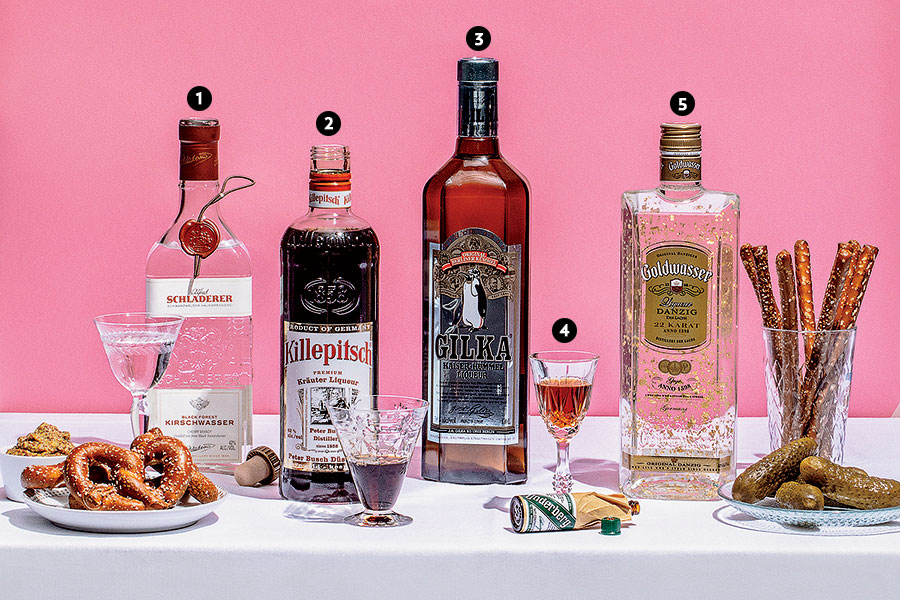
1. Kirschwasser
This is cherry schnapps, but not in the way we normally think of schnapps: “It’s made with distilled fruit juice rather than a neutral grain spirit. It’s like an extremely dry, delicate cherry brandy — and it doesn’t taste like cough syrup.”
TRY IT:A splash or two in a julep adds brightness without additional sweetness.
2. Killepitsch
Despite its unprepossessing bottle, consider this an advanced-level liqueur: “It’s intense. It’s got these dark fruit and black pepper notes, and it’s really bitter on the back end.”
TRY IT:Top a shot or so off with some tonic water and a squeeze of lemon and you’ve got a refreshing yet cool-weather-appropriate spritz.
3. Kümmel
“Think of flavored vodka, but instead of fruit, you have baking spices,” Burton says of this bracing liqueur, which originated in Holland but is loved by Germans. “It’s got the flavor of toasted caraway seeds and cumin.”
TRY IT:Add a quarter to a half ounce to a martini made with a citrus-forward gin and garnish with a lemon twist.
4. Underberg
If you’ve come around to loving the intensely herbal flavor of Fernet Branca, Underberg should be on your bar shelf. “It’s been a bartender handshake for some time. It’s got alpine notes, and it’s intensely dry and bitter. Plus, it comes in adorable little bottles.”
TRY IT:Take it like you would a shot of Fernet, as a digestif.
5. Goldwasser
Not to be confused with the frat-party staple Goldschläger, this liqueur is significantly more complex (and it’s got real gold flakes in it). “It’s this nice, delicate, citrusy flavor, and it’s totally OK to drink the gold flakes.”
TRY IT:Combine a quarter to a half ounce with vodka or gin and serve on the rocks with a twist.


